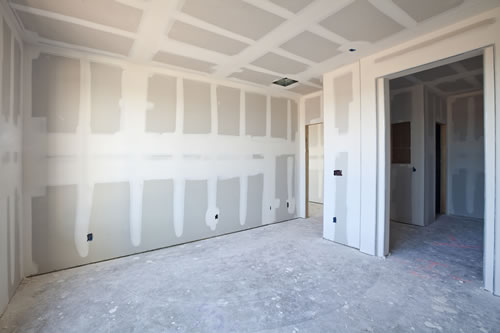
Exterior Panting and Surface Preparation Tips
by Mark T. Weiner, CSI
Winter’s drab grey has left us, and with the days brightening, our homes and buildings yearn for bright, new paint. For exterior surfaces to wear their new colors proudly, proper surface preparation is essential. Before prepping surfaces, be sure to wear protective glasses or goggles, waterproof gloves and protective clothing to avoid skin contact with harsh solutions. If any solution manages to make contact with your skin, wash it off promptly.
Mildew, moisture, discoloration, fading and peeling paint are some of the most common offenders that detract from an exterior’s appearance. Mildew is best attacked by mixing a solution containing 1 quart of liquid bleach and 3 quarts of warm water. This solution should be scrubbed on the mildewed area and allowed to dry for at least 48 hours before painting. A quicker alternative to the previous procedure is to use a power washer. Using a power washer will also provide the added benefit of blasting away any peeling or blistered paint. If a power washer is used, allow extra time for drying.
Additional attention should be paid to exterior surfaces with moisture problems, such as bubbles containing water. These bubbles are best excised by cutting them open and sanding the surface to dispel the moisture. Surfaces having serious moisture problems must be allotted adequate drying time (usually a few months) over the summer, which will allow water an extended escape. As an added precaution, wedges can be used to reduce water build-up on the substrate. To confirm adequate drying time, testing with a moisture meter over roughly a dozen surface spots with prove reassuring. If the reading register in the green safe zone on the meter, the surface will be that much closer to getting its new face.
There are a few points worth noting about new wood siding:
- It must be clean and dry
- Knots and pitch streaks should be scraped, sanded and spot-primed before a full priming coat is applied
- Nail holes and other indentations should be patched with a quality filler or putty and then sanded
- Caulk should be applied after priming
It is also important to prime and paint new wood siding as soon as possible, as it doesn’t take kindly to bare exposure to the elements for very long.
Regarding painting and the paint itself: Postpone application when rain is imminent, immediately after rain has fallen, during foggy weather and when temperature is cooler than 50 degrees F (especially when using standard latex paint). Although standard latex paints are widely used and vastly popular, acrylic paints are enjoying greater acceptance, thanks in part to their ease-of -application and high durability.
Before purchasing paint, the buyer should pose key questions to the supplier such as:
- Can the supplier visit the site to make recommendations?
- Do they provide the latest color trends and sample sheets?
- Do they provide written surface preparation instructions?
- Do they provide on-site assistance to address issues as they arise?
Painting exterior surfaces is a necessary and time-intensive task that is made most productive by paying attention to the fore-going procedures and suggestions, which can go a long way toward getting a superior appearance that ensures protection and attractiveness.
To quickly recap:
- Identify the source of the problem such as peeling, fading or discolored paint.
- Excellent results require thorough surface preparation.
- Buy the proper paint for the job.








